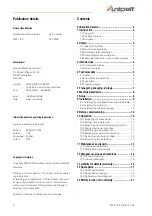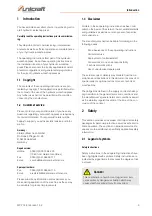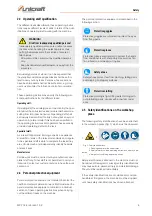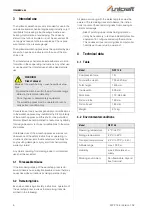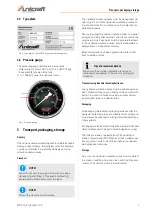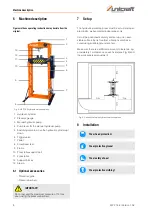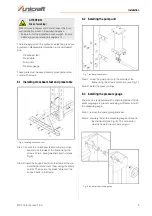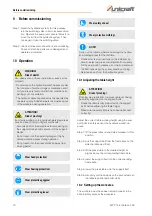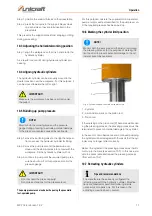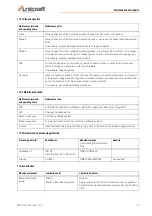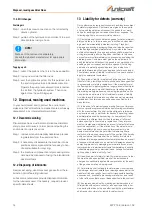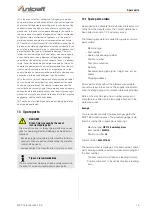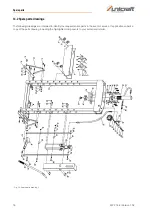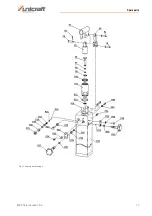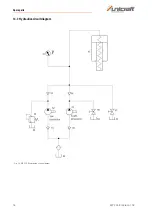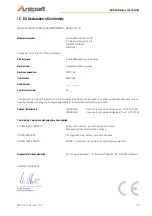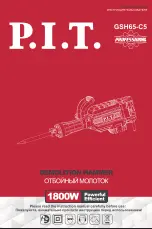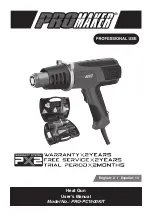
Transport, packaging, storage
WPP 15 E | Version 1.02
7
4.3 Type plate
Fig. 2: Type plate of the WPP 15 E hydraulic workshop press
4.4 Pressure gauge
The pressure gauge used features two scales:
- Outer scale [1] shows US tons [1tn. sh.=907.18 kg]
- Inner scale [2] shows metric tons
[1 t = 1000 kg], usual throughout Europe
Fig. 3: Pressure gauge
5 Transport, packaging, storage
Delivery
Check the hydraulic workshop press for visible transport
damage upon delivery. Immediately notify the haulage
company or retailer if you identify damage on the hy-
draulic workshop press.
Transport
The hydraulic workshop press must be transported up-
right only. Do not stack hydraulic workshop presses on
top of each other. Do not place any other objects onto
workshop presses.
Secure the upright hydraulic workshop press on a pallet
using bolts. Said pallet must be correctly secured in the
cargo area. Any loose parts must be securely fastened
to the hydraulic workshop press, secured separately or
safely stored in a separate container.
Blank metal parts have been greased to protect them
from humidity and dirt.
Transport using industrial trucks/pallet trucks:
The hydraulic workshop press must be positioned on an
even, stable surface (e.g. a pallet) and be secured with
bolts in the event of transport using a suitably dimen-
sioned pallet truck or industrial truck.
Packaging
All packaging materials and packing aids used for the
hydraulic workshop press are suitable for recycling and
must always be disposed of using material-based recy-
cling systems.
Packaging materials made of cardboard must be shred-
ded and disposed of as part of waste paper recycling.
The foils are made of polyethylene (PE), padding is
made of polystyrene (PS). Dispose of these substances
at a recycling centre or hand them over to the relevant
waste disposal company.
Storage
As a rule, the hydraulic workshop press must be stored
in a clean condition and a dry, clean and frost-free envi-
ronment. The pistons must be fully retracted.
NOTE!
Take into account the weight of the machine when
transporting and lifting it. Transport and hoisting
equipment must be able to carry the load.
NOTE!
Protect the machine from humidity.
Tips and recommendations
Make sure the corrosion protection is active or
replaced (if necessary) in the event of prolonged
transport.


